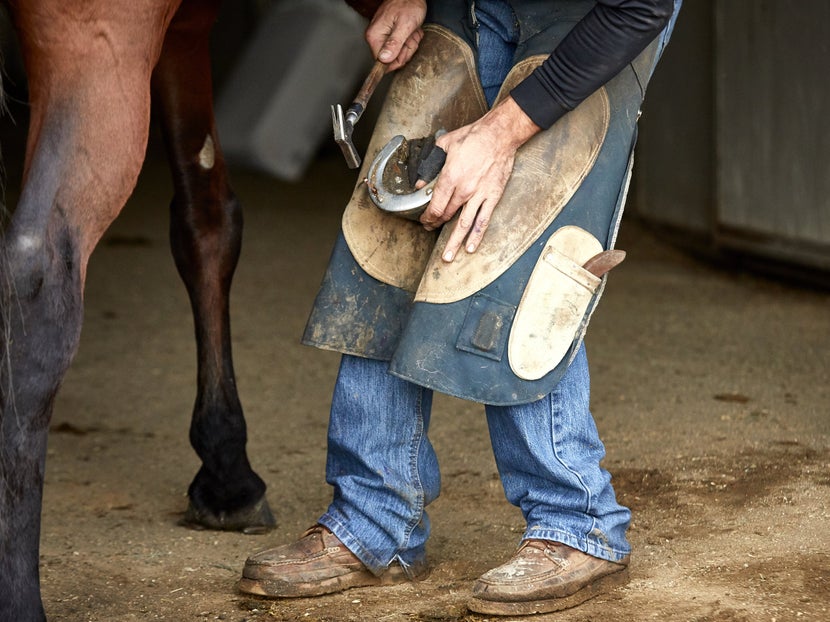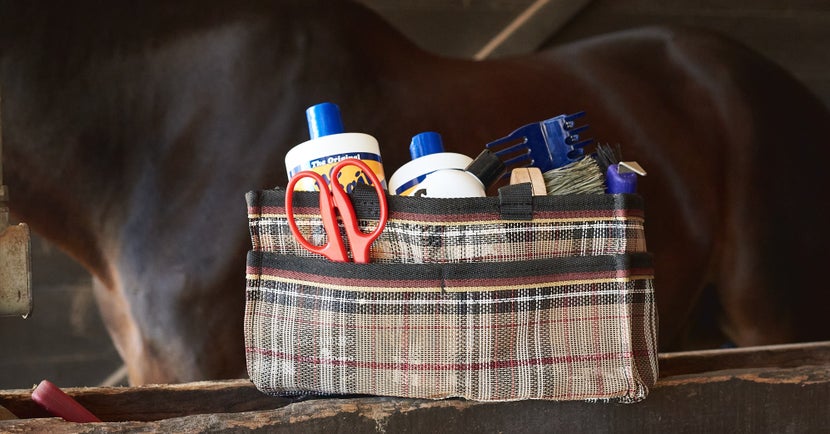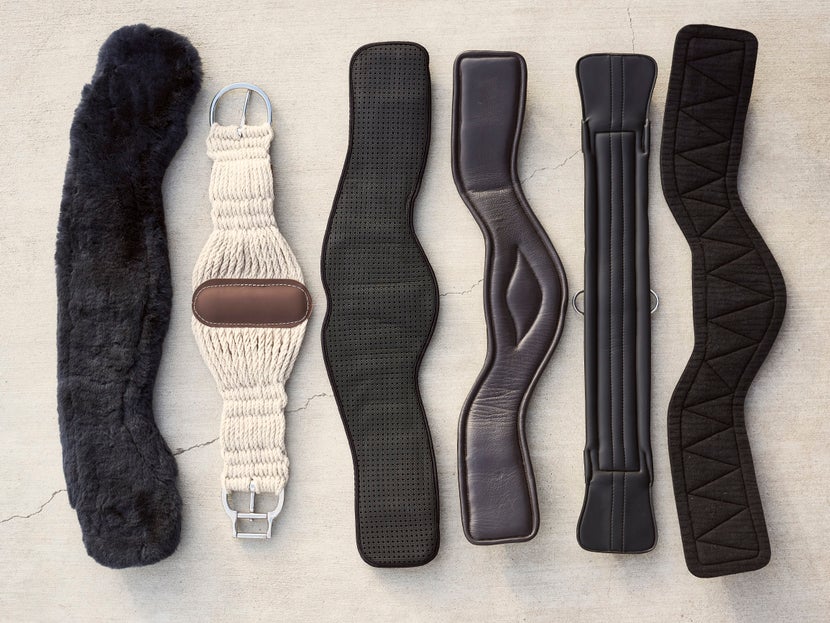Equine Essentials: Ultimate Guide for Beginner Horse Owners
Check Lists and Helpful Tips to Welcome Your New Equine Companion Home!

Many lessons can be learned through riding horses. They help us build physical and emotional strength and teach us about responsibility and accountability. All of these lessons multiply when we step into horse ownership. Buying a horse for the first time, or any time, is an exciting but daunting task, and it's easy to overlook the necessary steps or items that will make the process smoother. That's why we've put together this first-time horse owner's guide to help make the process of welcoming home your new partner as easy as can be!
You've Decided to Buy the Horse ... Now What?
You've test-ridden the horse, done the pre-purchase exam, and now you've made the decision to buy; it's time to bring them to their new home. But what is needed once the decision is made? We will go over the necessary equipment, who you should have in your horse's support crew, and anything else you may need to know about owning a horse. Once all of this is taken care of, you can enjoy your new furry friend with much less stress!
Keeping a Horse at Home vs. Boarding
Before you bring your new horse home, there are a few things you need to decide and organize. The biggest question is where is the horse going to live. Are you keeping them at your house or a boarding facility? This might be determined by zoning laws in your area, whether or not you want access to a trainer or facilities, and if you want to be the full-time caretaker for your horse.
If your horse is going to live at your house, there is plenty of prep work to be done. Having adequate space, shelter, feed storage, and clean water is a necessity. Also, creating a space for manure, likely a spot to park a truck and trailer, and potentially space to ride are all things to consider. If you plan to board your horse, most of this is taken care of for you.

Horse Health Care Team
In either case, your horse will need a professional care team. This includes a vet/dentist and farrier at the minimum and might extend to a nutritionist, body worker or masseuse, and saddle fitter. When boarding, barns may have a professional care team that they routinely use, and it is generally simple to become a client of those practices. If this is the case, refer to your trainer or barn manager on how to become a client. If you purchased your horse locally, it is common to use the same trusted vet for the pre-purchase exam as your routine vet.
Additionally, you will likely need to find a local feed store. If your horse lives at home, this store will be your source for all your horse's hay and grain and immediate medical supplies. Scheduling regular deliveries or picking up hay is essential so your horse doesn't go hungry. If you are boarding your horse, hay is often taken care of but grain and supplements are the owner's responsibility. Again, it is always a good idea to ask your trainer or barn manager for answers to these questions.
| Pro Tip! A record book, like this template from the United States Pony Club, is a great way to keep track of your horse's health and patterns. Here you can record notes about their baseline health as well as any stand-out events. They are useful to have in a pinch for a quick health history reference, especially if nobody familiar with your horse is available in an emergency. |
Horse Care Equipment Checklists
Now we know where the horse is going to live and sleep, how they will get their food, and who will take care of them professionally, so it's time to do the fun shopping! Some equipment you need for your horse is dependent on what discipline you ride, but other items are needed for any and every horse, like a grooming kit!

Grooming Kit
A complete grooming kit is very important to proper horse management. Daily grooming helps horses to look and feel their best. Some of the benefits include a shiny coat from distributing natural body oils, de-shedding, some good scratching, injury identification, matt prevention, clear hooves, and bonding! All of these factors and more will impact your horse on a mental and physical level and help you learn more about your horse's personality and behavior patterns. Use our Grooming Kit Builder to create the perfect kit that includes:
- Curry Comb - A tool that has nubs or teeth used to loosen dirt and hair by being worked in a circular motion. They also act as massagers and help to stimulate blood circulation and a shiny, healthy coat.
- Soft Brush - Also called a body brush or finishing brush, these have soft bristles or natural fibers and are used to polish the coat and spread natural oils.
- Hard Brush - Also called a dandy brush, these have hard bristles and are used to remove the dirt and hair that was loosened by the curry comb.
- Hoof Pick - Used to remove debris, rocks, and dirt from the horse hoof. Some have brushes attached allowing for an even more precise clean.
- Mane and Tail Brush - Similar to a human hair brush, these are used to remove knots, tangles, and debris from a horse's mane, tail, and forelock. Detangler spray should always be used to prevent hair from being ripped out.
- Detangler Spray - Used in manes and tails, detangler spray helps to condition the hair and soften knots and tangles. This helps keep hair from being pulled out.
Additionally, a bathing kit is great to have in order to keep your horse super clean and grime-free. A full bathing kit includes a wash bucket, body sponge, sweat scrapper, shampoo, conditioner, and maybe some stain remover. If you bought a grey or a horse with white you will need a gallon of Quic Silver Whitening Shampoo (we don't make the rules). Shedding tools are useful to have as well but some horses are too sensitive for these, so it might be better to buy one once you know your horse and their preferences better.
Tack for Riding

Depending on your discipline and what you intend to do with your horse, the tack you'll need will differ. You will always need a halter and lead rope, though the style is up to you and what level of pressure your horse needs. Tack for riding will generally include a bridle/headstall, saddle, saddle pad, and girth/cinch. Bits and hackamores are standard but the type is based on what your horse needs and how they respond to various types of pressure. Depending on your horse's anatomy, a breastplate/breast collar or crupper might be necessary to keep your saddle from sliding around. Check out our learning center for information on how to size, fit, and choose tack for your horse, including how to decode bit types. Below are the most common pieces of tack needed for all riders, regardless of discipline.
- Horse Bridle/Headstall: At its most basic level, a bridle or headstall is the piece of tack the rider uses to communicate direction and speed to their horse. There are many different types of bridles and headstalls, so we suggest reading our articles to learn which one is right for you and your horse.
| Endurance Bridles & Headstalls | Western Bridles & Headstalls |
- Saddle: Regardless of type, a saddle allows a rider to remain upright and communicate with their horse through seat and leg aids. Read our guide on how to measure a saddle so you order the correct size!
| English Saddles | Endurance & Trail Saddles | Western Saddles |
- Saddle Pad: A properly fitting and appropriately styled saddle pad should be well-suited to protect your horse's back to help them perform their best. Ordering the correct size and style is crucial, and if you need more resources, check out our guide on how to choose an English or Western saddle pad!
| English Saddle Pads | Endurance & Trail Saddle Pads | Western Saddle Pads |
- Girth: A girth or cinch aids in keeping the saddle secure on your horse while promoting their natural movement. There are many to choose from, so we suggest reading our article on how to choose the right girth or cinch for your horse!
| English Girths | Endurance Girths & Cinches | Western Cinches |
Ensuring that you have the correct fitting tack is going to be one of the most beneficial things you can do for your partnership. Having ill-fitting tack will lead to an uncomfortable horse and messy signals. Using a saddle fitter is crucial to keeping your horse's back happy and healthy, meaning you can have the best possible ride! Adding regular saddle fittings to your horse's professional care routine can have major benefits, just like having their teeth checked routinely can prevent issues related to bit comfort.
Lastly, if you are going to have all this tack, you need to have tack cleaning materials. Regular cleaning extends the life and keeps tack safe to use. Dry tack is more likely to break and can lead to a dangerous situation. Dirty tack can cause rubs and sores on horses which can open up a whole can of worms, plus who likes looking at dirty tack all the time?
| Pro tip! Some shedding tools like the Strip Hair Gentle Groomer and the Haas Essentials Express Brush are great for getting hair off saddle pads! |
Veterinary Equipment

The truth about horses is that we spend more time off them and taking care of them than we do actually riding them. Because of this, there is necessary equipment that allows us to properly take care of them and their surroundings. A grooming kit is a great start and provides daily care, but what about veterinary supplies? In our own homes, we keep Band-Aids and simple remedies for minor ailments, and the same idea extends to the barn. A basic equine first-aid kit should include:
- Petroleum Jelly (or other lubricant) - Serves as a lubricant for thermometer insertion.
- Digital Thermometer - To take the horse's temperature, and should always be used with lubricant.
- Isopropyl Alcohol or Alcohol Wipes - To sterilize tools or disinfect a wound.
- Antibacterial or Antimicrobial or Antibiotic Scrub - To clean and disinfect wounds as well as sterilize tools.
- Topical Antibacterial or Antimicrobial or Antibiotic Agent - An easy-to-use cream that helps promote healing and prevent infections.
- Wound Dressing Pads (4" is a common size) - To layer over wounds before wrapping to keep everything clean and sterile.
- Flexible Stretch Adhesive Bandage - Also referred to as "vet-wrap," it is a bandaging material that is often the outermost layer that creates a compressive and self-adhering hold. This should never be used without padding underneath.
- Gauze Roll - Bandaging material that is gentle on skin and tissue and can be directly applied to the horse.
- Bandage Scissors - Scissors that have an angled tip and blunt edge to allow for cutting material against the skin without risking nicking the skin.
- Pillow Wraps for Stable Bandage/Standing Wrap - Padding used in a compressive bandage that provides protection to the leg and aids with inflamation.
- Bandage for Stable Bandage/Standing Wrap - Outer wrap/bandage material used in a compressive bandage.
- Duct Tape - Used for hoof abscesses or as a final measure on a bandage or wrap to ensure nothing comes undone.
| Pro Tip! Flexible Stretch Adhesive Bandage can easily become too tight, especially if there is minimal padding underneath, and ultimately cause issues. To avoid this, take a roll and pre-stretch it, then roll it back up. This way, if you need to use it, you can do so confidently! There will still be elasticity in the material, so it will behave the same in application. |
Other common things that horse owners like to keep on hand include hoof packing, materials for hoof abscesses or hoof boots, liniment and poultice, and Epsom salt. To learn more about soaking, packing, and wrapping hooves and legs, check out our guide to How to Soak & Bandage a Horse Hoof as well as our guide to Applying a Standing Wrap. Additionally, some horse owners like to keep pain medication and antihistamines on hand, like bute, banamine, or dexamethasone. These are only able to be acquired through a vet and should only be administered with the prescription or recommendation of a vet.
Barn & Stable Equipment

Depending on whether your horse lives at home or at a boarding facility, you will need various barn and stable items. These can also vary depending on where geographically you and your horse live. For example, if it is colder you will need to have heavier blankets compared to a tropical area where fly gear may be more important. A general list of items to consider, though each is subject to your specific situation would include:
- Muck and Manure Equipment - A wheelbarrow, muck fork, and broom are a great place to start.
- Hay Net or Feeding Apparatus - Depending on how fast or enthusiastically your horse eats, a hay net can help to slow them down or keep them organized.
- Water Buckets - Automatic waterers are common but often when traveling or during a power outage having two to three 5-gallon buckets or one 17.5-gallon tub full of water is beneficial.
- Grain Tub - Style is dependent on the space available and whether your horse has special preferences.
- Blankets (multiple depending on weather and living conditions) - Blankets can be stable/inside or turnout/outside and come in various weights/insulation levels.
- Fly Gear - Fly masks, boots, and sheets are common pieces of horse wear. Fly spray is great for riding or for horses who don't like wearing clothes.
- Horse Cookies (you will need lots and lots of these) - These are mandatory materials for any horse owner to reward good ponies!
| Pro Tip! If you need to give your horse electrolytes, make sure they have a freshwater option also available. If your horse rejects the electrolyte water, you want to ensure they still have something to drink. |
Variable equipment like blankets may seem daunting. To learn more about when to blanket, how to size and fit blankets, as well as decoding types of blankets, check out our collection of blanketing guides. Similarly, the world of fly protection can easily become overwhelming, so read about our recommendations, tips, and tricks for outsmarting the pests! Other small items like duct tape and permanent markers are great to have on hand for labeling equipment or quick temporary fixes.
Trailer & Travel Essentials

If a truck and trailer have entered your life, there is required equipment that can be the difference between a fun, safe, and stress-free travel and a disaster on wheels. When you are traveling with a trailer (with a horse or empty) you should always have a spare tire and tire changing materials, wheel blocks or chalks, and potable water. When there is a horse involved, you should always have enough water for the horse with a bucket, an extra halter and lead rope, a first-aid kit, and breakaway twine or ties to safely secure your horse in and out of the trailer. Many equestrians like to have their horse travel in shipping boots or wraps, auxiliary protective gear, as well as travel with hay in the trailer stall. Riding Warehouse sponsored rider Renae Crowly has put together her traveling essentials so you too can hit the road like a pro.
In case of emergency, it is a valuable time saver to have your trailer prepped and ready so you can leave at a moment's notice. Creating transportable first-aid kits and having easy-to-access records can truly be a life-saving difference. To learn more about emergency preparedness check out our guide to Equine Emergency Preparedness.
Closing Thoughts
It can be overwhelming to buy a new horse. The amount of equipment and time that needs to be allocated can be a lot to handle, but the payoff is beyond worth it! Having a horse of your own teaches incredible time management, resource allocation, compassion, empathy, advocacy, and so much more. And on top of all that, unconditional love and a new best friend! The journey into horse ownership is a long but rewarding process, and we hope you feel better prepared to assume the role of owner. If you have any questions, feel free to reach out to our customer service team at 1-800-620-9145 or info@ridingwarehouse.com for help. Ride on!